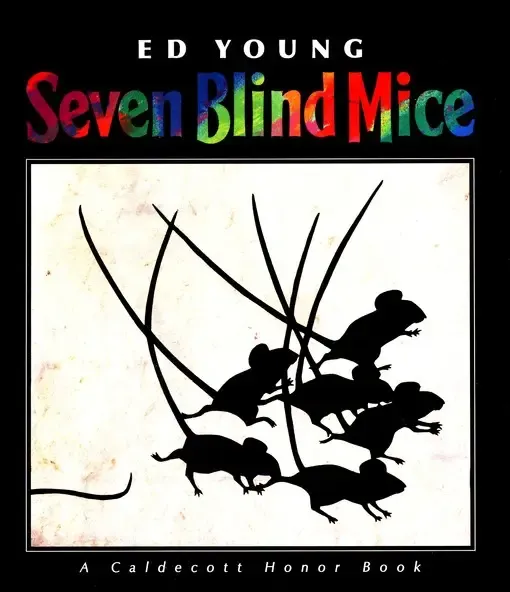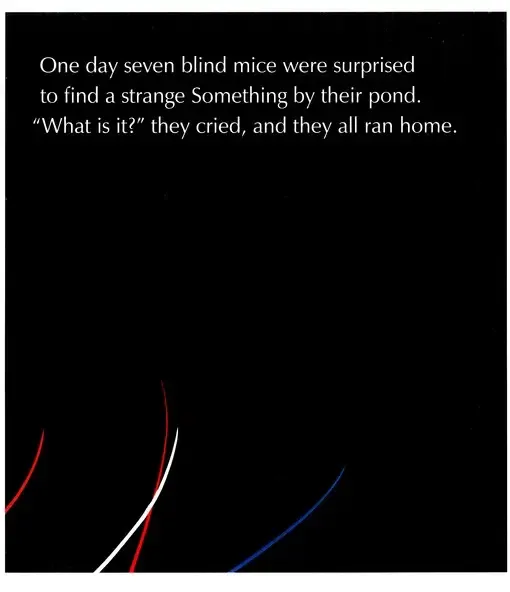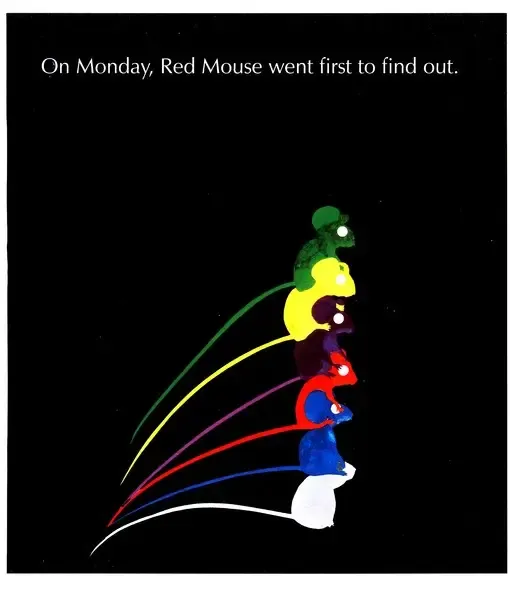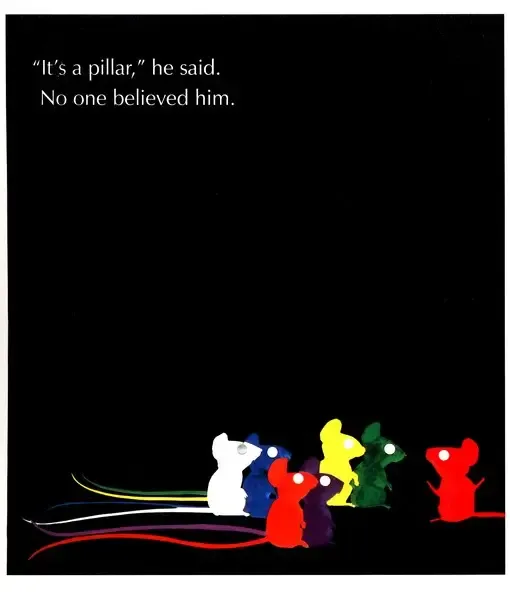Seven Blind Mice by Ed Young is a brilliant visual feast and a clever fable all rolled into one. It’s the kind of book that seems simple on the surface, but with every read, you discover a new layer of meaning. Children will be captivated by the bold colors and striking illustrations, but the story’s deeper message will linger with them long after the last page is turned.
The tale begins with seven blind mice who each, one by one, set out to explore a mysterious “Something” by the pond. Each mouse investigates it on a different day of the week and returns with a confident proclamation of what they’ve found. One claims it’s a pillar, another says it’s a snake, while others declare it’s a fan, a rope, a wall, and a spear. It’s only when the final mouse, the white one, takes the time to explore the whole object from end to end that the true nature of the mystery is revealed. It’s an elephant!
Ed Young’s artwork is unforgettable. The cut-paper collage illustrations are vivid and textured, using a pitch-black background that makes the bright, colorful mice practically glow on the page. Each mouse is a different color, and this visual distinction makes it easy for children to follow which mouse is exploring on which day. The way the elephant’s features are revealed in bits and pieces mirrors the way the story unfolds, a brilliant design choice that invites children to predict, guess, and engage with the narrative.
This book is a masterpiece of simplicity with profound philosophical underpinnings. On one level, it’s a playful guessing game for children. On another, it’s a parable about perspective, observation, and the value of looking at the whole picture before drawing conclusions. This story connects beautifully to lessons on problem-solving, critical thinking, and even teamwork. It’s a natural springboard for discussions with kids about how different people can see the same thing in different ways, and how sometimes, we’re all right and all wrong at the same time.
For read-alouds, Seven Blind Mice is a pure joy. Each mouse’s declaration of what the Something is feels like a refrain, giving kids a chance to chime in with their guesses. The pacing of the story is perfection. It’s slow and steady, allowing young readers to stay curious without rushing to the end. And when that final mouse puts it all together, there’s this satisfying “Aha!” moment, one that children will feel deeply, especially if they’ve been playing along by trying to guess what the Something might be.
There’s also a subtle but powerful element of patience and humility embedded in this story. Each mouse’s certainty about “being right” contrasts beautifully with the final mouse’s thoughtful, deliberate approach. It’s a gentle reminder that sometimes, being quick to judge can lead us astray. It’s a lesson that’s as important for adults as it is for children.
Seven Blind Mice is the kind of book that feels fresh no matter how many times you read it. It’s a book that grows with children. Younger kids will be captivated by the colors, animals, and the puzzle-like nature of the story. Older kids will start to pick up on the larger themes of perception, wisdom, and cooperation. It’s also an ideal book for teachers and librarians to use in classrooms. Discussions on perspective, observation, and storytelling will flow naturally after reading this book aloud.
Ed Young’s masterful storytelling and artistic talent are on full display in Seven Blind Mice . It’s a book that doesn’t just teach, it invites children to think, wonder, and explore. Like the white mouse, readers are encouraged to look beyond the pieces and see the whole picture. For any child, or adult, who’s ever felt sure they had it all figured out, this story is a gentle nudge to slow down, take another look, and see things from every angle. It’s a timeless tale, a must-have for every home, classroom, and library. This book will never be “just” a story, it’s a pathway to big ideas.
Questions to ask while reading:
- Why do you think the mice see different things when they explore the Something?
- How does the white mouse's approach differ from the other mice?
- What do you think the author is trying to say about perspective and observation?





